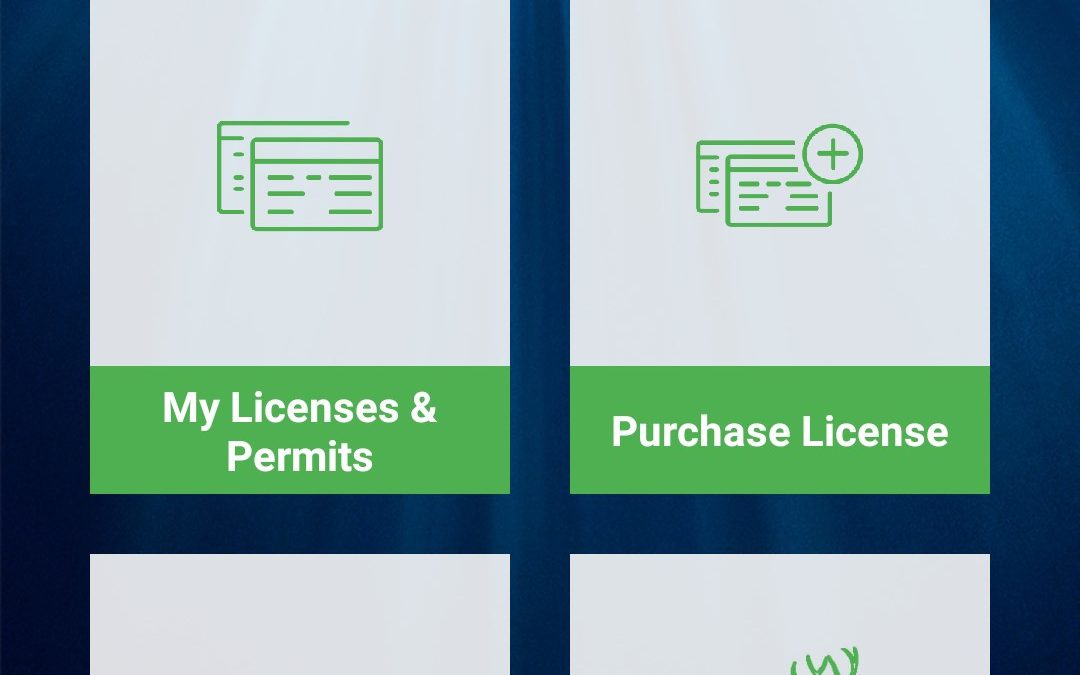
by Mark Mauldin | Oct 23, 2020
Archery season for white tailed deer opens this Saturday (10/24/20) in FWC Hunting Zone D (basically the Panhandle west of Tallahassee, see figure 1). Before you go hunting be sure that you have a plan in place for logging and reporting your harvest. Last year FWC implemented a mandatory harvest reporting system. That system is still in effect this year but with some modifications.

Figure 1. FWC Hunting Zone D
myfwc.com
The most notable change to the harvest reporting system this year is with the associated smart phone app. There is a new app this year – Fish|Hunt Florida. This new app will replace the Survey123 for ArcGIS app that was used last year.
In my opinion, the logging and reporting function on the Fish|Hunt Florida app is simpler to use than the previous app. Additionally the Fish|Hunt Florida app has many other useful features. A few highlights include; the ability to view and purchase hunting and fishing licenses/permits through the app, interactive versions of hunting and fishing regulations, and several other handy resources for sportsmen including, marine forecasts, tides, wildlife feeding times, sunrise & sunset times, boat ramp locator and a current location feature. Screenshots from the app are included below. The Fish|Hunt Florida app is available for free through the Apple App Store and the Google Play Store.
Remember, the current regulations state that your deer harvest must be logged before the animal is moved. Take a minute or two to install the app on your phone before you go hunting. Using the app allows logging and reporting to happen simultaneously. The app can be used for logging and reporting a harvest even in areas where cell service is poor. Harvest information will can be saved and the app will automatically complete the process as soon as adequate cell service is available. The alternative to using the app is a two-step process, the harvest can be logged (prior to being moved) on a paper form and then reported by calling 888-HUNT-FLORIDA (888-486-8356) or going to GoOutdoorsFlorida.com within 24 hours.
Follow the link for specific instructions for logging and reporting a harvested deer using the Fish|Hunt Florida app; don’t worry, it’s easy. Fish|Hunt Florida app instructions
For more information on the Fish|Hunt Florida app and the FWC Deer Harvest Reporting System visit myfwc.com.
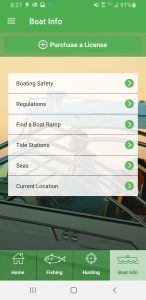
Screenshot of the Boat Info tab from the Hunt|Fish Florida App. Click on the image to make it larger.
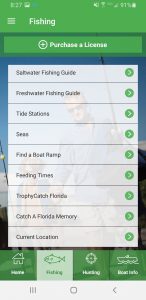
Screenshot of the Fishing Tab from the Hunt|Fish Florida App. Click on the image to make it larger.
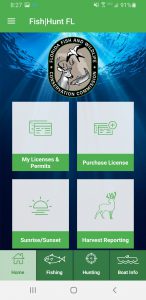
Screenshot of the Home screen from the Hunt|Fish Florida App. Click on the image to make it larger.

Screenshot of the Hunting tab from the Hunt|Fish Florida App. Click on the image to make it larger.
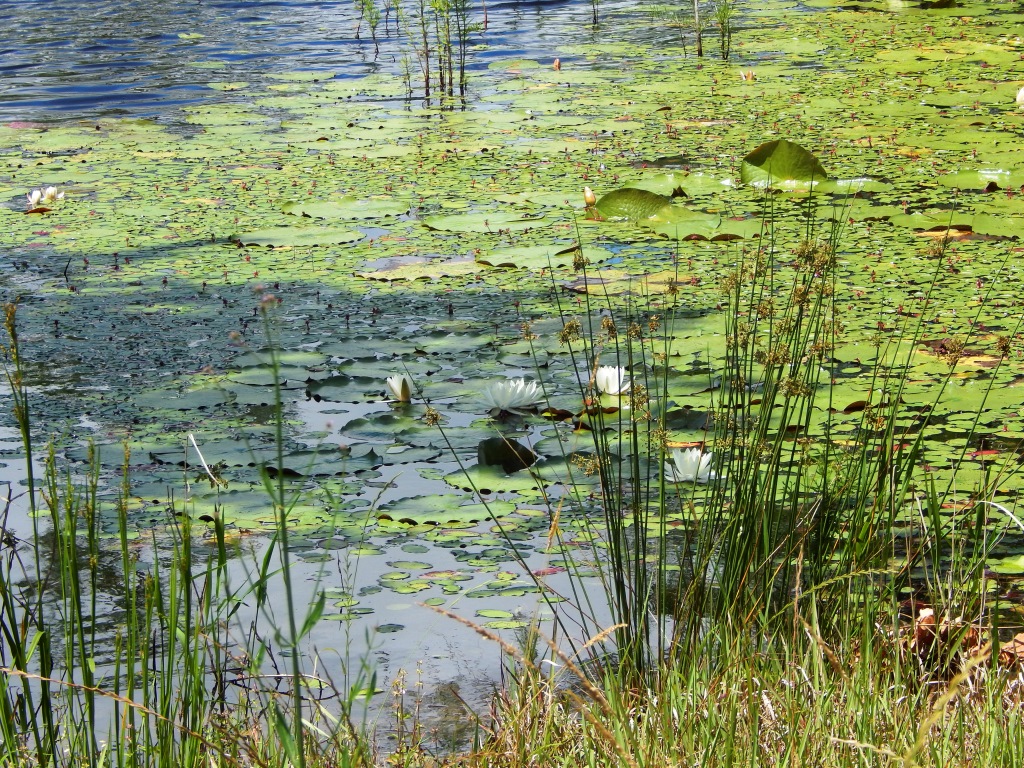
by Mark Mauldin | Apr 9, 2020
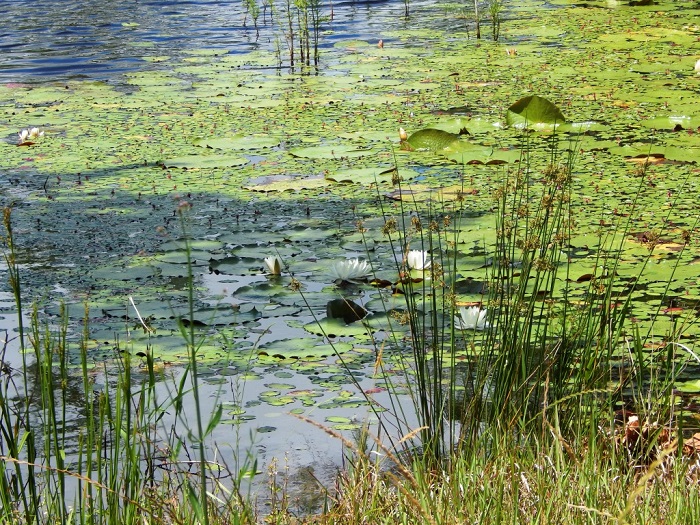
Monitor your ponds closely throughout the spring and make any necessary herbicide applications before weed growth becomes too excessive.
Photo Credit: Mark Mauldin
Even though the calendar says we are only a few weeks into spring, recent weather has been more like summer. The early arrival of sustained warm weather has water temperatures in local ponds high enough that aquatic vegetation growth has really taken off. This early growth period is the ideal time to evaluate ponds and address any aquatic weed issues that may be present, since aquatic weed infestations tend to become worse through the summer. Getting an early start generally helps control efforts to be more successful and less expensive, so get started sooner rather than later.
As plants grow, they are able to build up energy reserves, making them more difficult to control. The longer they are allowed to grow, the stronger and more difficult they are to control. Controlling weeds earlier in the growing season reduces this problem.
Similarly, as the growing season progresses plants produce more and more biomass. If a herbicide is applied and the weeds are killed, large amounts of decomposing plant material in the water can cause problems. The decomposition process uses oxygen; dissolved oxygen in the pond can drop to levels that are hazardous to fish and other aquatic species. The more plant material that is present when herbicides are applied the bigger concern this becomes. Applying herbicides earlier in the growing season, before large amounts of biomass are produced, can help lessen this problem.
Further compounding the issue, warm water is physically able to hold less dissolved oxygen than cooler water. Late in the summer, pond water can be very warm with low concentrations of dissolved oxygen even before large amounts of decomposing plant material are added.

To help reduce the risk of oxygen depletion never treat more than ½ of a pond at one time, if weed growth is already substantial treat no more than 1/3 of a pond at one time and always allow 10 -14 days for oxygen recovery between treatments. Also, avoid treating on cloudy days, another factor that can lead to lowered dissolved oxygen. Photo Credit: Mark Mauldin
Evaluating the vegetation in a pond is always the first step in the management process. Figuring out what kind of weeds you have, and if the population warrants control might seem simple, but it can be somewhat challenging. This is particularly true for submerged weeds – those that grow beneath the surface of the water. Unfortunately, submerged weeds are often the most troublesome weeds for pond owners to deal with. All submerged vegetation is not necessarily a bad thing, but there are several aggressive and/or invasive species of submerged aquatic plants that grow very rapidly and can be quite problematic, making proper evaluation critical.
While emergent and floating plants are easier to evaluate than their submerged counterparts, proper identification of all aquatic plants can help determine their potential for spread and, if warranted, the most effective control measures. If you had problem weeds in your pond last summer, you probably still do; get them identified and under control before they have time to spread. If you did not have problem weeds last summer, be on the lookout for any new/different kinds of weeds to head-off any potential issues.
Due to the current situation with COVID-19, generally speaking, County Extension Agents are not permitted to make field visits, but we are still here to help identify and provide control recommendations for your aquatic weeds. Floating and emergent weeds can generally be effectively identified using pictures. Submerged weeds can be much harder to identify using only pictures. For the best results, special care should be taken when photographing aquatic weeds. Collect a small sample of the weed, place the sample in an opaque container (preferably white in color), cover the sample with clean/clear water just deep enough for the sample to completely spread out and be supported by the water. Take multiple, well focused pictures of the sample. Some pictures should be of the entire sample, while other need to focus on the leaves and the attachment of the leaves to the stem(s). The pictures need to be emailed (not sent via text message) so the image size/quality is not compressed.
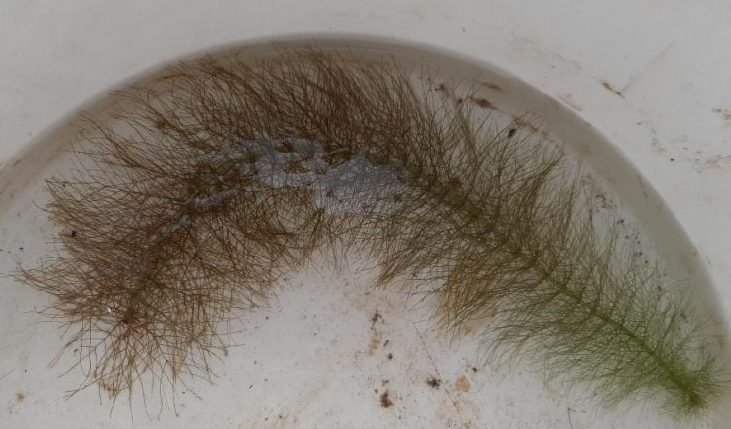
A good image of a submerged weed sample. In addition to this image close-ups of the leaves and attachment points will likely be needed for identification. Photo Credit: Nikki West
Now is the time to start managing aquatic weeds. The current situation in the world will make the process a little different, but with some effort and patience your County Extension Agent can help you get your weeds identified and develop a plan for control. On a positive side-note, most of the commonly recommended herbicides used to control aquatic weeds are available to order online, so it is quite possible you can address your aquatic weed issues all while staying “safer at home“.

by Mark Mauldin | Feb 28, 2020
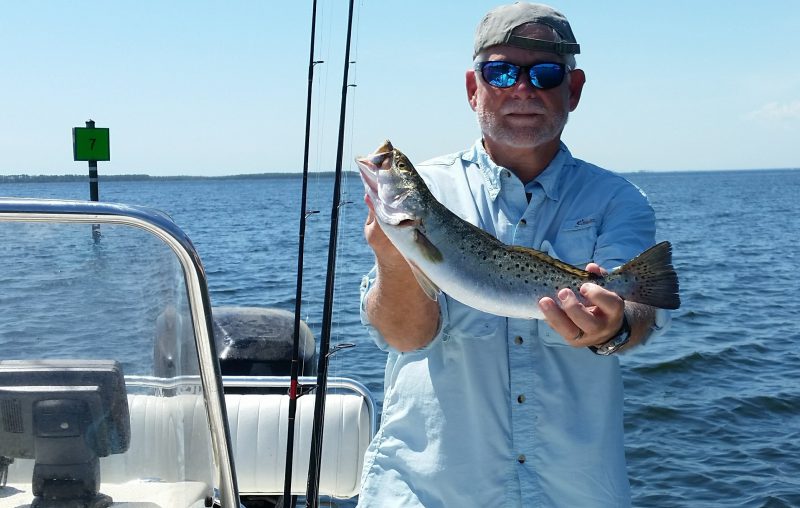
A spotted seatrout caught last summer in the St. Andrew’s Bay system (an area now included in the new Western Panhandle Management Zone).
Photo credit: Mark Mauldin
Recently FWC (Florida Fish & Wildlife Conservation Commission) announced rule changes relating to spotted seatrout.
The text was taken directly from FWC press releases; details not pertinent to NW Florida were removed.
Several rule changes for spotted seatrout [went] into effect Feb. 1, including a closure to spotted seatrout harvest in the new Western Panhandle management zone. Spotted seatrout are one of Florida’s most popular inshore fisheries. The Florida Fish and Wildlife Conservation Commission (FWC) made these changes after reviewing the results of a recent stock assessment and gathering input from anglers. These changes were made to benefit spotted seatrout populations while continuing to provide quality fishing opportunities.
The following rules [went] into effect Feb. 1, 2020:
- Creating two new zones by splitting the Northwest spotted seatrout management zone into the: (See maps below.)
- Western Panhandle (Escambia County through the portions of Gulf County west of longitude 85 degrees, 13.76 minutes but NOT including Indian Pass/Indian Lagoon).
- Big Bend (remaining portion of Gulf County plus Indian Lagoon, and Franklin County through Fred Howard Park Causeway in Pinellas County).
- Reducing bag limits
- Western Panhandle: three fish (was five).
- Big Bend: five fish (no change).
- Modifying the recreational slot size limit from 15-to-20 inches to 15-to-19 inches total length.
- Allowing one seatrout over 19 inches per vessel (currently per harvester).
- Prohibiting captain and crew from keeping a bag limit on a for-hire trip.
- Re-establishing the February recreational closure in the Western Panhandle zone.
Learn more about spotted seatrout by visiting MyFWC.com/Marine and clicking on “Recreational Regulations” and “Spotted Seatrout.”
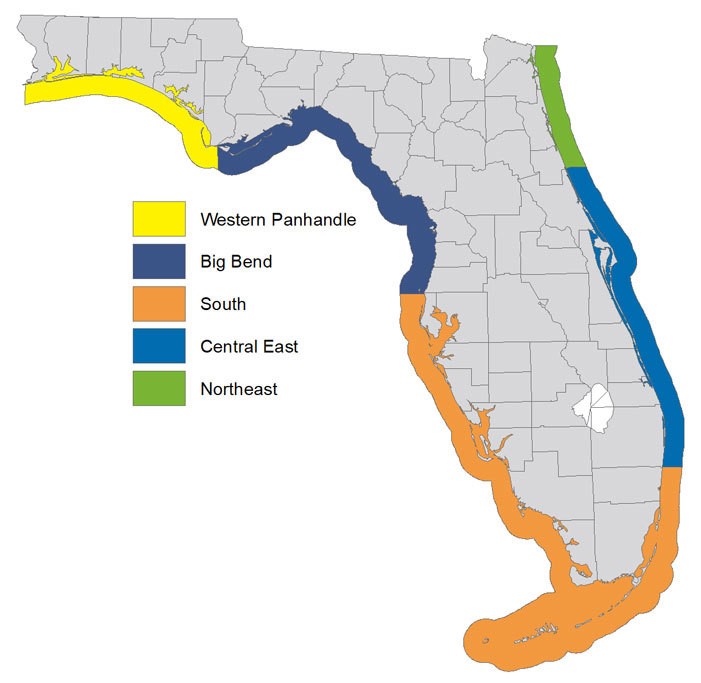
Newly-approved FWC Spotted seatraout management zones, effective February 1, 2020
Image source: www.myfwc.com
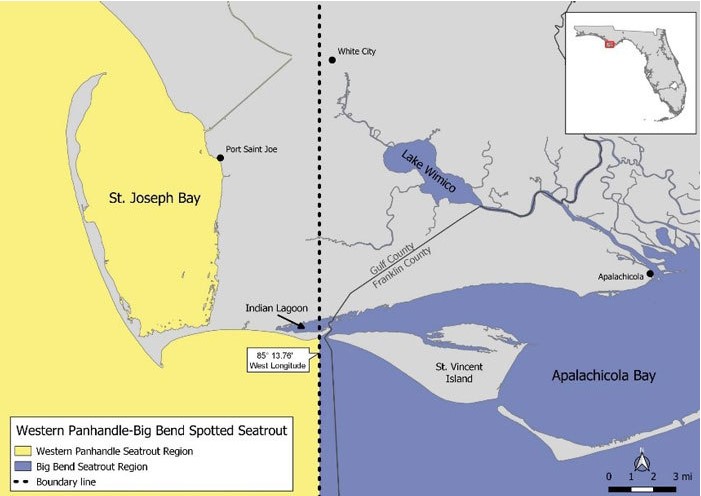
New boundary between the Western Panhandle and Big Bend spotted seatrout management zones effective Feb. 1, 2020.
Image source: www.myfwc.com
Earlier this week Governor DeSantis announced the dates for the 2020 Gulf Red Snapper Season – June 11 through July 25.
Governor Ron DeSantis Announces 2020 Gulf Red Snapper Season
Tallahassee, Fla. – Today, Governor Ron DeSantis announced the popular 2020 Gulf red snapper recreational season is set to open June 11 through July 25, with a possible fall reopening if quota is available. This season will apply to those fishing from private recreational vessels in Gulf state and federal waters, and to charter vessels that do not have a federal reef fish permit and are limited to fishing in state waters only.
Earlier this month, Florida was delegated authority to manage recreational red snapper harvest from private vessels in Gulf federal waters.
“I’m pleased to announce that our state’s good conservation practices are allowing us to have a 45-day Gulf red snapper season this year,” said Governor DeSantis. “Gulf red snapper season is always an exciting time for anglers and is just another reason why Florida remains the Fishing Capital of the World.”
“Gulf red snapper is a conservation and management success story for Florida anglers,” said Florida Fish and Wildlife Conservation Commission (FWC) chairman Robert Spottswood. “Just a few years ago, a 45-day season for red snapper in both state and federal waters was out of reach. Thank you to all the stakeholders and anglers who helped make this season possible by providing input and sharing information about their fishing trips.”
“FWC is proud to be able to work with our stakeholders to balance conservation with fishing opportunities for Gulf red snapper and we are excited to see what the future holds as FWC takes the unprecedented step of managing this resource in both state and federal waters of the Gulf,” said Spottswood.
For more on recreational snapper regulations, visit MyFWC.com/Marine and click on “Recreational Regulations” and “Snapper” under the “Reef Fish” tab.
Follow the link for more information on Snapper fishing in Florida – FWC Snappers
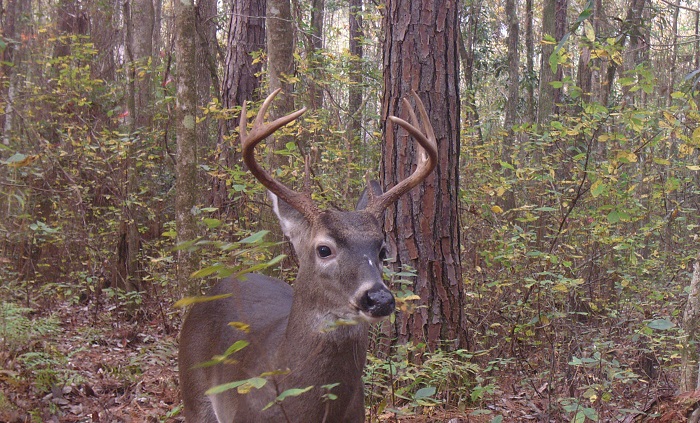
by Mark Mauldin | Nov 8, 2019

There are new regulations this season involving mandatory reporting of all deer harvested in Florida.
Photo Credit: Mark Mauldin
Deer hunting season here in Northwest Florida officially started this past Saturday (10/26) with the opening of archery and crossbow season; muzzleloading and general gun season will both open later this month. If you are fortunate enough to find success hunting in the woods, it is important that you remember substantial changes have gone into effect regarding the mandatory reporting of harvested deer. The following is a only a summary of some of the new regulations – complete official hunting regulations are available from the Florida Fish and Wildlife Conservation Commission.
The primary new regulation, put as simply as possible (again, this is only a summary):
All hunters must log their harvested deer prior to moving it from the point of harvest and report their harvested deer within 24 hours.
A hunter may log a harvested deer on a paper 2019-2020 Deer Harvest Log or via the FWC Deer Harvest Reporting App. The app allows a hunter to log and report a harvested deer, completing the process. If a hunter logs a deer on the paper form, they must also report the deer by calling 844-392-DEER (3337) between 8 a.m. – 8 p.m. ET or reporting online at MyFWC.com/HarvestReport. When successfully completed, either of these options, calling or going online, will result in a confirmation number. The confirmation number must be recorded on the Deer Harvest Log for the process to be complete. Note: using the app also generates a confirmation number that is automatically saved in the “sent” folder within the app. Follow the link for step-by-step instructions for using the FWC Deer Harvest Reporting App.
-
All harvested deer must be logged (on paper form or with the app) prior to being moved from where they were originally found.
-
All harvested deer must be reported (phone, online, or app) and confirmation number recorded on the paper log (or automatically on the app) within 24 hours of harvest**.
**Hunters must report harvested deer: 1) within 24 hours of harvest, or 2) prior to final processing of the deer, or 3) prior to the deer or any parts of the deer being transferred to a meat processor or taxidermist, or 4) prior to the deer leaving the state, whichever occurs first.
Hunters should be prepared to log and report harvested deer before they go hunting. They should have a copy of the 2019-2020 Deer Harvest Log with them, or have the FWC Deer Harvest Reporting App installed on their mobile device. In order to successfully log and report a harvested deer the hunter will also need the following information:
- Name (first and last name of the person who harvested the deer)
- Date of birth
- FWC Customer ID number (CID)
- Date of harvest
- Time of harvest
- Public or private land
- County
- Deer management unit
- Wildlife management area (if applicable)
- Method of harvest
- Antlered or antlerless deer
- Number of antler points (if antlered deer was indicated)
- Antlerless male or female (if antlerless deer was indicated)
- For deer taken on private lands, whether a deer program permit was used (Antlerless Deer Program permit or Private Lands Deer Management Program permit)
- 6-digit Tag number (if a deer program permit was used)
Another change for this hunting season is the establishment of the annual statewide bag limit of 5 deer per person of which no more than 2 deer can be antlerless.

FWC Deer Harvest Reporting APP
https://myfwc.com/hunting/deer/harvest-report/?redirect=harvestreport

FWC Deer Harvest Reporting Log
https://myfwc.com/media/21998/deer-harvest-log.pdf
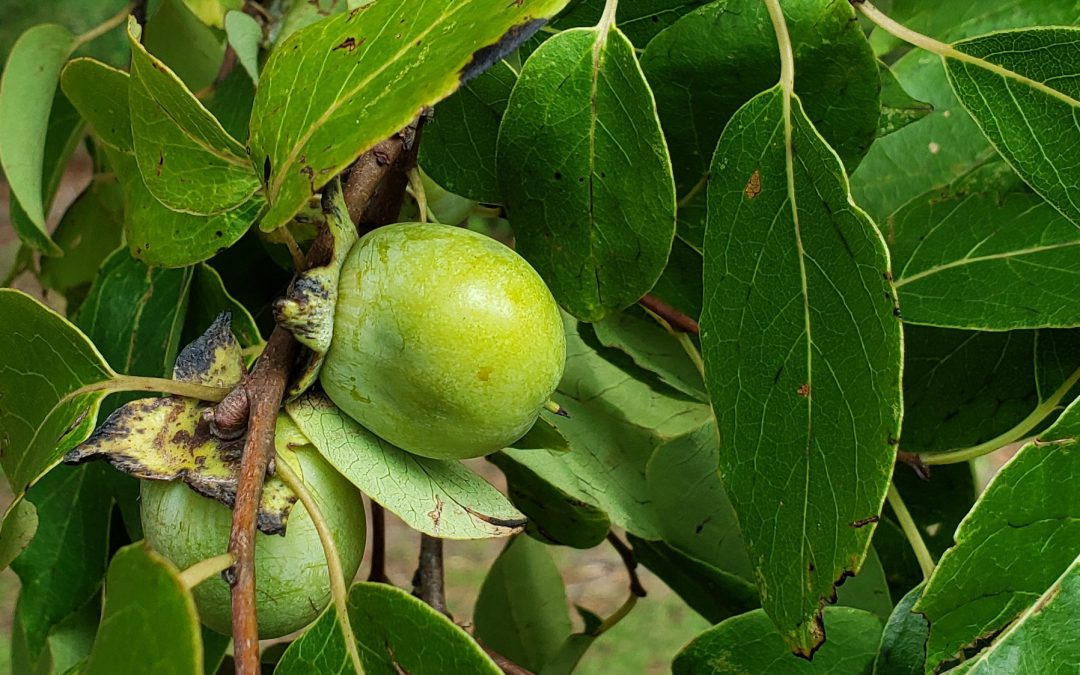
by Mark Mauldin | Oct 10, 2019
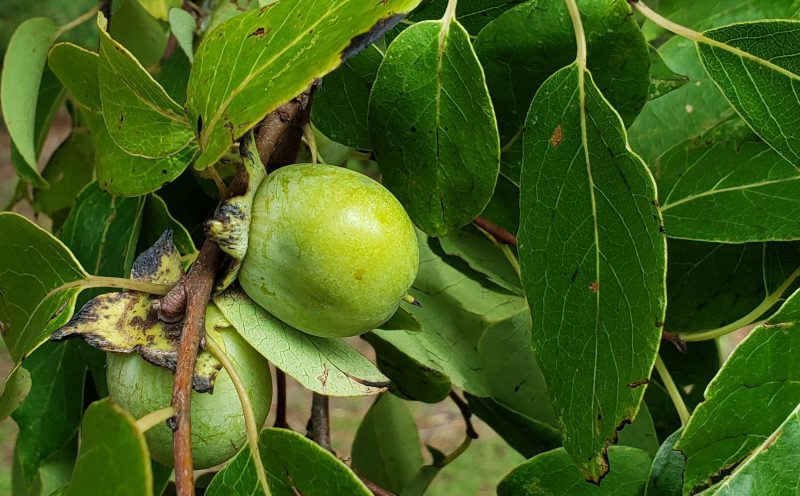
Protecting and promoting plants that produce soft mast, like this wild persimmon, can be a crucial step in improving wildlife habitat. Note: This time of year persimmons will be orange, the picture was taken earlier in the summer.
Photo Credit: Mark Mauldin
Landowners frequently prioritize wildlife abundance and diversity in their management goals. This is often related to a desired recreational activity (hunting, bird watching, etc.).
In order to successfully meet wildlife related management goals, landowners need to understand that animals frequent specific areas based largely on the quantity, quality and diversity of the food and cover resources available. Implementing management strategies that improve wildlife habitat will lead to greater wildlife abundance and diversity.
Herbivorous wildlife feed on plants, mostly in the form of forages and mast crops. All wildlife species have preferences in terms of habitat, especially food sources. Identifying these preferences and managing habitat to meet them will promote the abundance of the desired species.
Herbaceous plants, leaves, buds, etc. – serve as forages for many wildlife species. Promoting their growth and diversity is essential for improving wildlife habitat. Three common habitat management practices that promote forage growth include:
1) Create forest openings and edges; forested areas with multiple species and/or stand ages, areas left unforested allowing for increased herbaceous plant growth.
2) Thinning; open forest canopy allowing more light to hit the ground increasing herbaceous plant growth and diversity.
3) Prescribed fire; recycle nutrients, greatly improve the nutritional quality of herbage and browse, suppress woody understory growth.
Mast – the seeds and fruits of trees and shrubs – is often one of the most important wildlife food sources on a property.
Hard mast includes shelled seeds, like acorns and hickory nuts and is generally produced in the fall and serves as a wildlife food source during the winter.
Soft mast includes fruits, like blackberries and persimmons, and is generally produced in the warmer months, providing vital nutrition when wildlife species are reproducing and/or migrating.
Making management decisions that protect and promote mast producing trees will encourage wildlife populations.
Landowners can make supplemental plantings to increase the quantity and quality of the nutrition available to wildlife. These supplemental plantings (food plots/forage crops and mast producing trees) can be quite expensive and should be well planned to help maximize the return on investment.
Key points to remember to help ensure the success of supplemental wildlife plantings.
- Select species/varieties that are well adapted to the site.
- Take soil samples and make recommended soil amendments prior to planting.
- Make plantings in areas already frequented by wildlife (edges, openings, etc.).
- Food plots should be between 1 and 5 acres. Long, narrow designs that maximize proximity to cover are generally more effective.
Habitat management and other wildlife related topics are being featured this year in the UF/IFAS building at the Sunbelt Ag Expo. Make plans to attend “North America’s Premiere Farm Show” and stop by the UF/IFAS building, get some peanuts and orange juice and learn more about Florida’s Wildlife.
 If you have any questions about the topics mentioned above, contact your county’s UF/IFAS Extension Office or check out the additional articles listed on the page linked below.
If you have any questions about the topics mentioned above, contact your county’s UF/IFAS Extension Office or check out the additional articles listed on the page linked below.
EDIS – Wildlife Forages
A significant portion of this article was summarized from Establishing and Maintaining Wildlife Food Sources by Chris Demers et al.




















